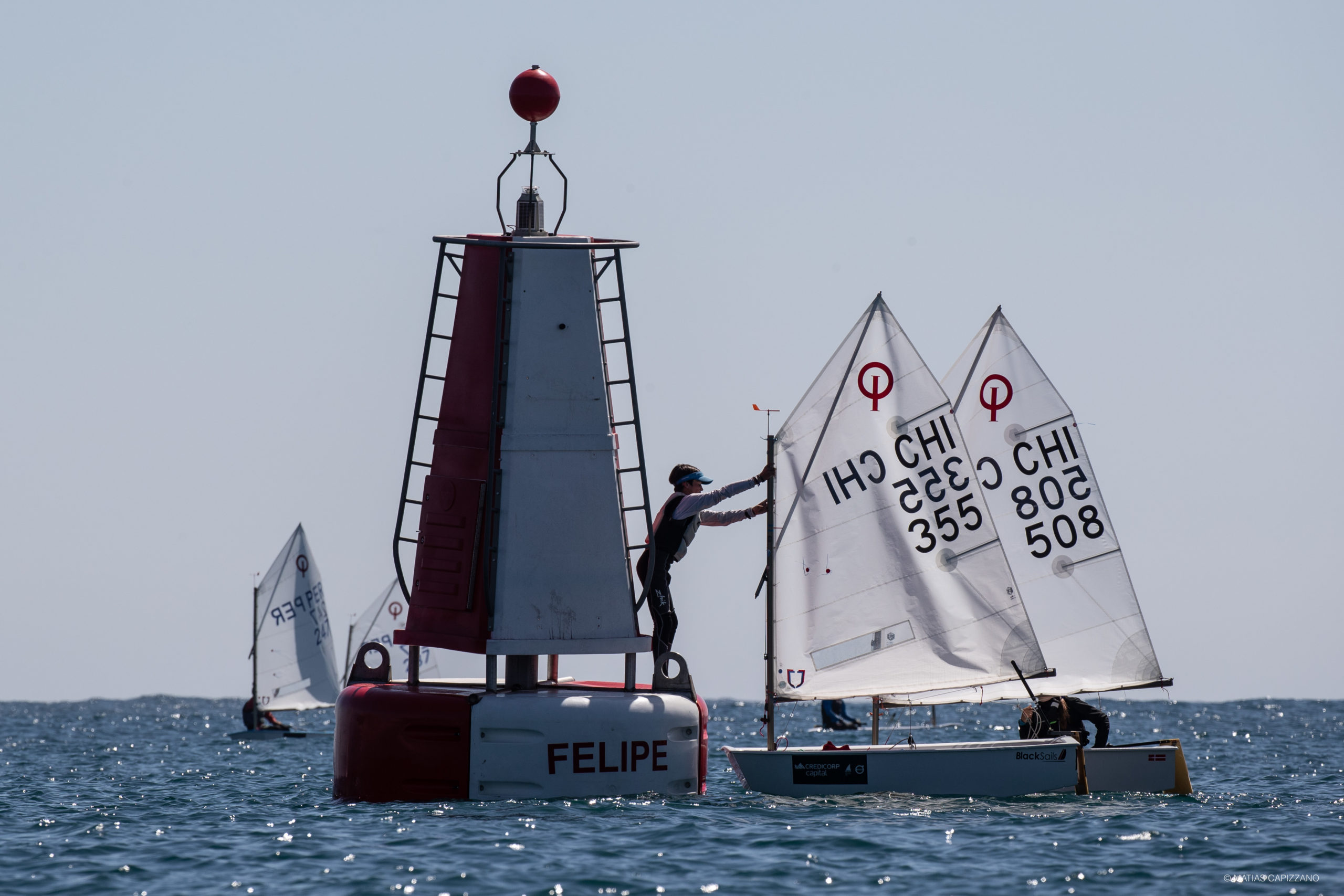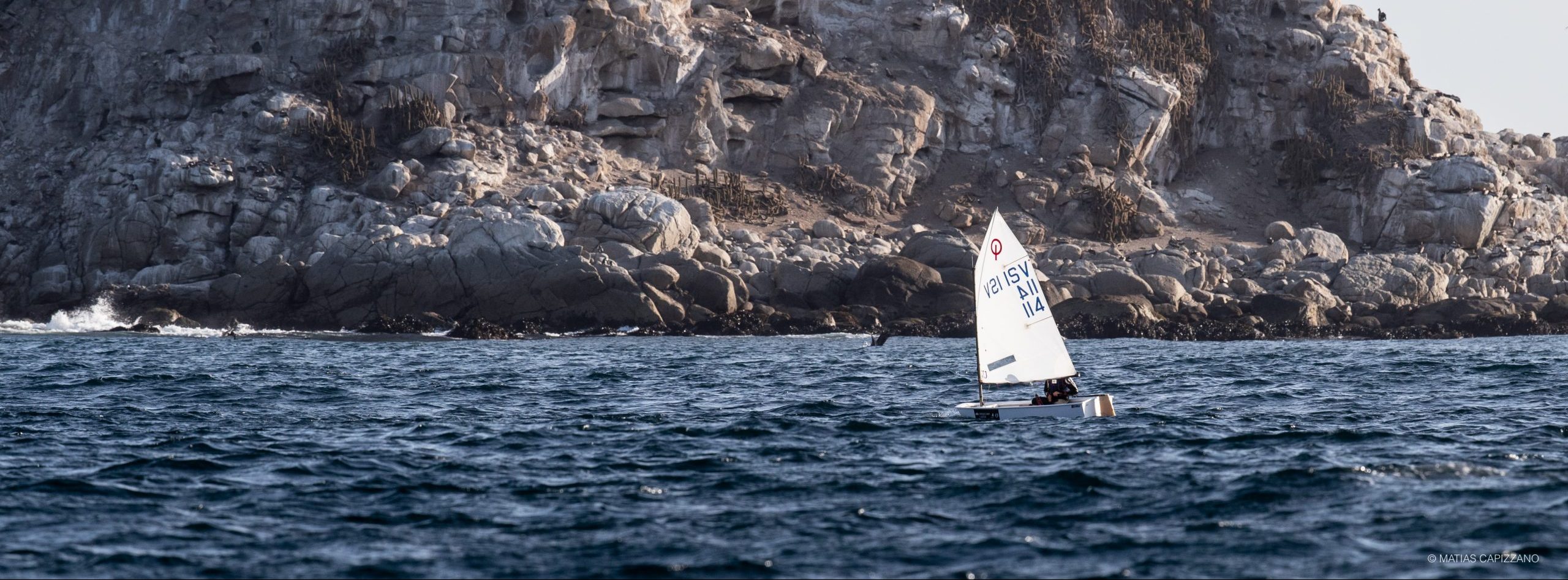



TUNING GUIDE
FOR OPTIMIST SAILS
CLASSIC LINE | JSAIL 2.0 LINE | B3
BY J SENIOR
In order to achieve the best possible result we need to spend a lot of time and make substantial effort to select our equipment and then get our settings done. The breakdown of sail types according to the weight range is quite understandable but it is not really enough: we should also consider other parameters like the sailor's height, experience, mental settings, dynamics and physical condition. While tuning our equipment we should also take into account the types of mast, boom, sprit, and the stiffness of the daggerboard. Optimist as such has a certain speed limit and can't go any faster unless a momentary acceleration when sliding off the wave while going downwind. This is why it is crucial to select a sail that will allow for reaching this maximum speed. The surplus of power will end up in heeling of the boat which makes the sailor balast excessively. Water is ca 880 times more dense than air. Bigger sailors make the boat submerge more which makes the hull resistance higher while the overall optimist + sailor set is heavier and requires more power to gain speed. This is why they need a more powerful sail.
The boat performance depends greatly on trimming. Our sails are designed in such a way that the same rules can be applied to all our models. All the ropes should be controlled and regulated very often, especially those on the mast, even in between races.
The boom: the ropes should be loose, distant of ca. 8mm, the outhull loose, the boom span very tight so that the sheet ring doesn't move beyond the 100mm, the boom span securing line cannot take over the tension to the boom, the thing is the boom must remain straight. At the same time the boom shouldn't be heavy overall as the boom, block and mainsheet weight would close the leech in a light wind. The clow rope is very important too, we can use it to regulate the leech tension when we need to keep a stable boom angle within the hull shape.
The mast: in a strong wind the ropes keep the luff ca. 1 mm distant from the mast constantly. In a light wind we recommend the following distances from top to bottom: 3,2,1,1,1,1,2,3. The sail should tack about without problems. The wear of the plastic ring on the mast as well of that in the hull should be checked often. The backlash between the two can significantly change the rake in all the axes in all courses. The mastband should be as high as possible in a light wind and as low as possible in a strong wind. The luff tension should be kept very low, the cunningham regulation is very difficult as adjusting the mastband requires adjusting the cunningham length as it is effective only with 3 rope loops, not more. A very precise cunningham regulation requires lots of effort and utmost precision.
The mastbend: there are many differences between the hulls of different makers. They can place the mast hole and the mast heel in various places and still meet the class rules, this is why the same mastbend will result in different mast inclination. The setting should make it possible to let go of the steer at ca. 10 knots without the course change or the boat should head up gently. If it happens to be too sharp you need to straighten the mast forward but with stronger wind and waves this will result in pushing the bow under the wave so you can't go past the limit. Usually you start the setting at 282 cm and then adjust it taking all the above into account. The settings always fall between 275 and 287 cm . Those winning medals at the worlds and the europeans were set at 282-284 cm. You must remember that straightening the mast especially in the light wind can close the leech. In order to avoid it you can shift the mainsheet ring to the front which is in accordance with the class rules. The mast stiffness should keep the sail shape intact. The sprit shouldn't be too rigid, it can't close the leech.
The vang tension should allow for the leech to be free from a sinusoid when going through waves at downwind courses. When the boat is well balanced all is left is to go and race.